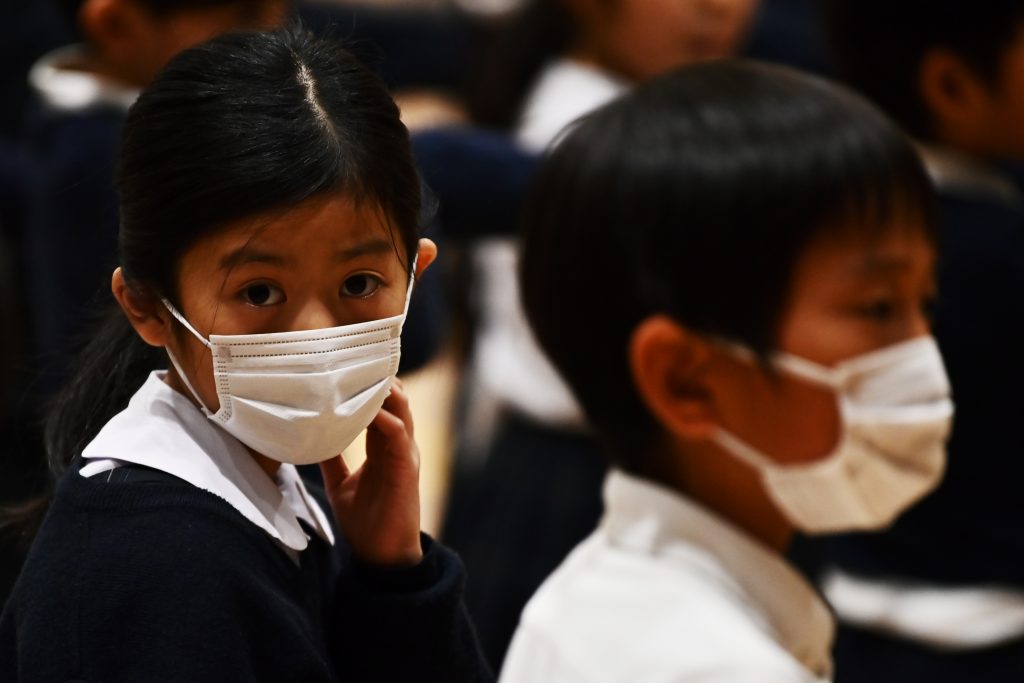
- ARAB NEWS
- 02 Aug 2025

MOTOMIYA, Japan: Born after the March 2011 earthquake and tsunami, children at or under elementary school third grade have no hands-on disaster memories.
Elementary schools in the Tohoku northeastern region are working to pass down disaster memories and lessons to those children and develop a sense of involvement among them through visits to disaster-afflicted areas and exchanges with students at other schools.
Maiko Takano, a 40-year-old teacher, is feeling a sense of crisis. “Some students don’t know what day March 11 is,” said Takano, who teaches at Shiraiwa elementary school in Motomiya, Fukushima Prefecture, one of the three hardest-hit prefectures in the Tohoku region.
Few students in upper grades have disaster memories, and lower-grade students show little reaction when she takes up the topic of the March 2011 disaster in her classes.
In an effort to raise their interest, Takano is trying to be creative, such as by using a “kamishibai” picture-card show and quizzes.
Motomiya is located in the Nakadori inland area of Fukushima. Some students at the elementary school have not been to coastal areas devastated by the tsunami, while Tokyo Electric Power Company Holdings Inc.’s Fukushima No. 1 plant, the site of Japan’s worst-ever nuclear accident, is about 50 kilometers away from the school.
In January, Takano escorted fourth-graders on a visit to Ukedo elementary school’s building in the Fukushima town of Namie, which sustained heavy damage from the quake-triggered tsunami, hoping to give them an opportunity to have a firsthand look at the current situation of a disaster area and challenges it confronts.
In a review of the trip, one student said there was no building near the sea, while another recalled a zone that is off-limits due to high radiation levels.
Students’ responses gave Takano confidence. “There are many things that can’t be understood unless they’re actually seen. Children noticed that their daily lives can’t necessarily be taken for granted,” she said.
In Iwanuma, Miyagi Prefecture, also in Tohoku, about 48 pct of the city area was flooded by the tsunami, and more than 180 people died. The city’s Tamaura elementary school lays weight on emergency drills to help children acquire the ability to take proactive action during a disaster.
In the current fiscal year ending this month, the school has conducted 16 drills assuming disasters such as quake, tsunami and tornado.
“We sometimes don’t give teachers and other staff members prior notice of a coming exercise as we don’t want drills to become mere formalities,” Tomoya Takeda, a 47-year-old senior teacher, said.
On Feb. 25, the school held an exchange event on the theme of the March 2011 disaster with Tochi elementary school in Nangoku, Kochi Prefecture, western Japan, which promotes education on disaster preparedness and risk reduction in preparation for a huge earthquake feared to originate in the Nankai Trough in the Pacific off central and western Japan. Iwanuma and Nangoku are sister cities.
At the event, held online due to the novel coronavirus epidemic, Naotaro Sugawara, 12, from Tamaura elementary school, made a presentation on wide-area cooperation in times of a disaster, in which he said, “Associations between people and mutual support are important.”
In view of the possibility of a large-scale quake hitting Japan again, Takeda said, “We should never allow memories of the (March 2011) disaster to be lost.”
“We should become more conscious of the need to protect ourselves on our own,” he said.
JIJI Press